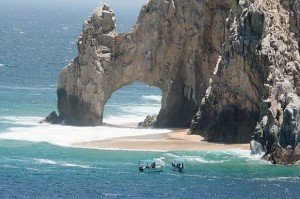
(Calgary Herald) The captain’s voice, heavy with a Dutch accent, came on the loudspeaker to say our the ship would be arriving at the Panama Canal at 6 a.m. the following day. Armed with my Canon and telephoto lens, I arrived on the upper deck, where there were already about 100 people, photo fanatics of every description, gathered.
The ship, Holland America’s Statendam, had to wait briefly to let the pilot from Panama come aboard to guide the ship through the canal. Another cruise ship was already behind ours, waiting for its turn. The Statendam moved very slowly, but majestically, through the canal, one of the most remarkable feats in the history of modern engineering. The 77-kilometre-long international waterway allows ships to pass between the Atlantic and Pacific oceans, saving 12,875 kilometres from a journey around the southern tip of South America, Cape Horn. The ships have to pay $35,000 for the privilege of passing through the canal.
Since 1977, Panama Canal has been established as a neutral international waterway and even in times of war every vessel is guaranteed safe passage.
It took our cruise ship almost eight to 10 hours to travel the canal through its three sets of locks. The locks form a kind of “staircase” for taking ships through the canal. Within the locks, ships are kept centred by electric locomotives called “mules” moving along the banks. While the ship was slowly making its way through the canal, one could see gigantic construction machinery on the right side of the canal, part of the $5.2-billion expansion project underway.
The expansion, expected to be completed in 2014, will allow ships double the size to pass, dramatically increasing the amount of goods that can pass through the canal.
When we were planning our 22-day Panama Canal cruise, friends thought we were crazy in the wake of the Costa Concordia, which hit a rock off the coast of Giglio, on Italy’s Tuscan coast. Thirty-two passengers and crew perished.
The immediate question that came to my mind was: is cruising safe and should we take a chance?
The Concordia tragedy in a way provided a silver lining for cruise seekers. The majority of cruise lines have excellent safety records and now all have introduced tighter safety regulations, adhering to the strict rules and regulations put forth under international maritime law. The crew receives training every week and practice drills are held more frequently, emphasizing crowd management.
As soon as we boarded the ship in Fort Lauderdale, passengers were asked to gather for a mass drill. No one was exempt. And it was comforting for passengers to note that during our voyage, staff were summoned for their practice drill several times.
Nowhere is the term “United Nations” better served than on board. The crew — belonging to many nations, religions and beliefs — work and live together in harmony. On board the Statendam, staff celebrate national holidays of the Netherlands, India, England, the Philippines, Indonesia, the United States and Canada. Religion also plays a large part in the lives of many shipboard personnel.
“All religions are respected, and time and room are set aside for all to worship as they fit,” a ship official said. “Respect is probably the key to the harmony that is evident on the ship.”
Ask anyone who has ever taken a cruise and they’ll tell you the food served is fine and plentiful.
Our party of four had the pleasure of meeting the ship’s executive chef, Bitt Kuruvillas, a resident of Bangalore, India. Butt took me on a tour of the ship’s kitchen, which caters to 1,250 passengers and 580 crew members every day. The kitchen is abuzz with activity all the time as the crew prepare hot and cold meals, pastry, appetizers etc. for passengers. For our party, the chef prepared special Indian dishes, which included delicious lamb biryani, fish and vegetable curries, with roti and rice.
Beverage manager Murata Kaya said 5,000 bottles of wine are ordered for a 20-day cruise, and 67 per cent of that is consumed. He orders 10,000 bottles and cans of beer for the same cruise — 7,000 beer and 3,000 bottles of hard liquor are consumed.
“It’s like a small village and we give great emphasis to customer service,” he said.
Cruising has not lost its appeal for Canadians: of the 1,242 passengers aboard, there were 614 Canadians and 462 Americans.
I also met 77-year-old John Lovejoy and his wife, Laurel, both of whom love cruising. The Lovejoys, who live in Palm Beach, Fl., were honoured by Holland America for taking its cruises for a total of 124 days. The captain of the ship presented him with a bronze medal at a special luncheon. The Panama Canal cruise was their 10th.
Asked why he was so fond of cruises, Lovejoy said: “Where can you get three excellent meals a day and your room cleaned twice a day? Even my wife doesn’t give that to me at home.”
The best cruise he has taken so far was in Europe, which went from Barcelona, visiting ports in Portugal, Morocco and Cannery islands.
The Lovejoys take five cruises a year. For a year and a half, he has been confined to a motorized scooter, but that doesn’t deter him. He has used the scooter on all of the British Isles, inside Windsor Castle, as well as inside of the largest mosque in the world at Casablanca, Morocco. As soon as they disembarked in San Diego, they were planning another cruise to the southern Caribbean and on to Brazil.
—
Mansoor Ladha is a Calgary-based journalist, author and travel writer.